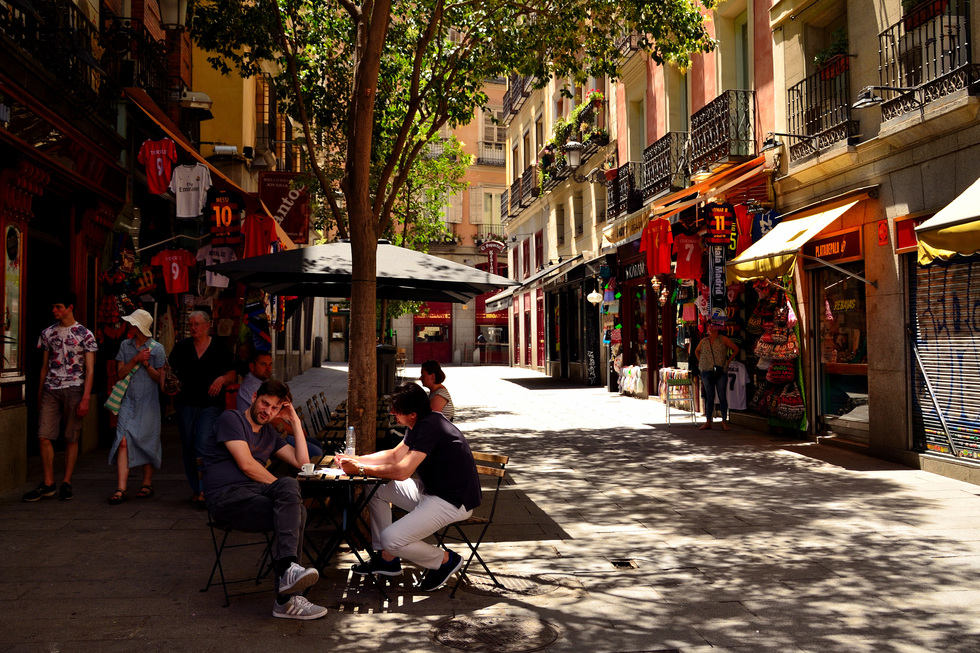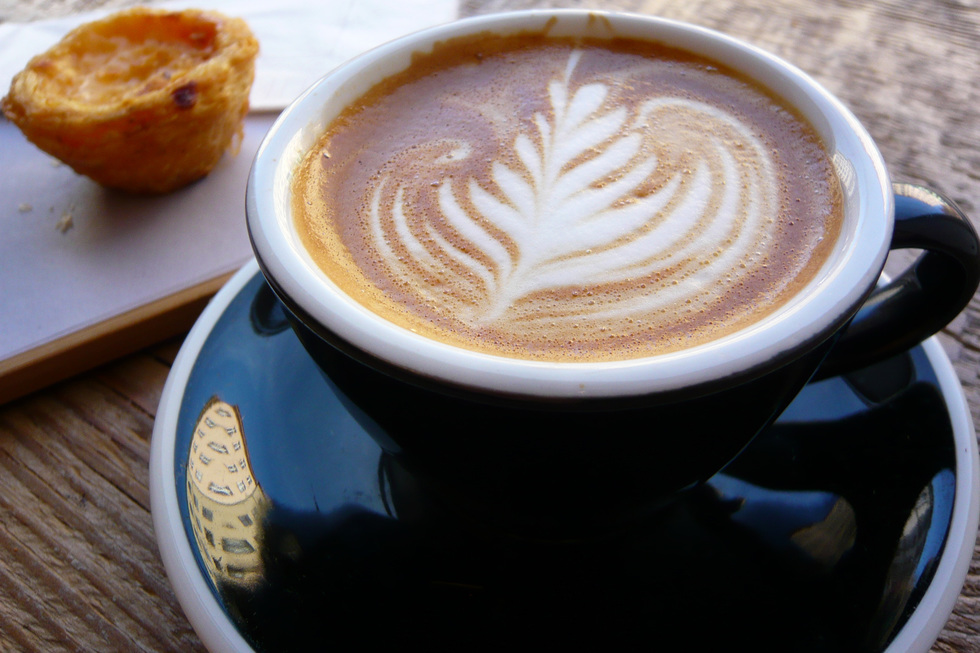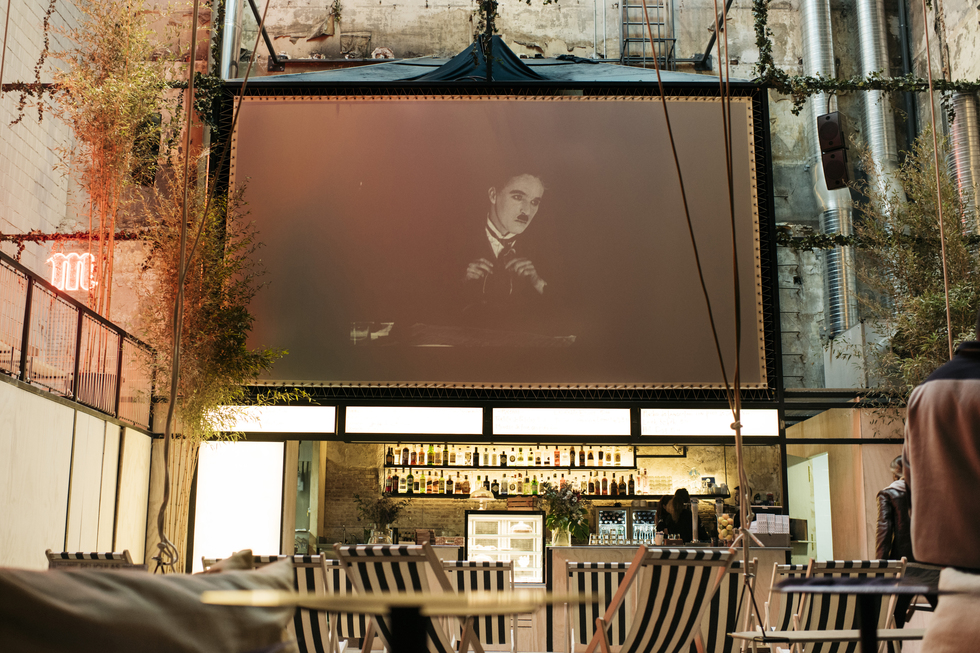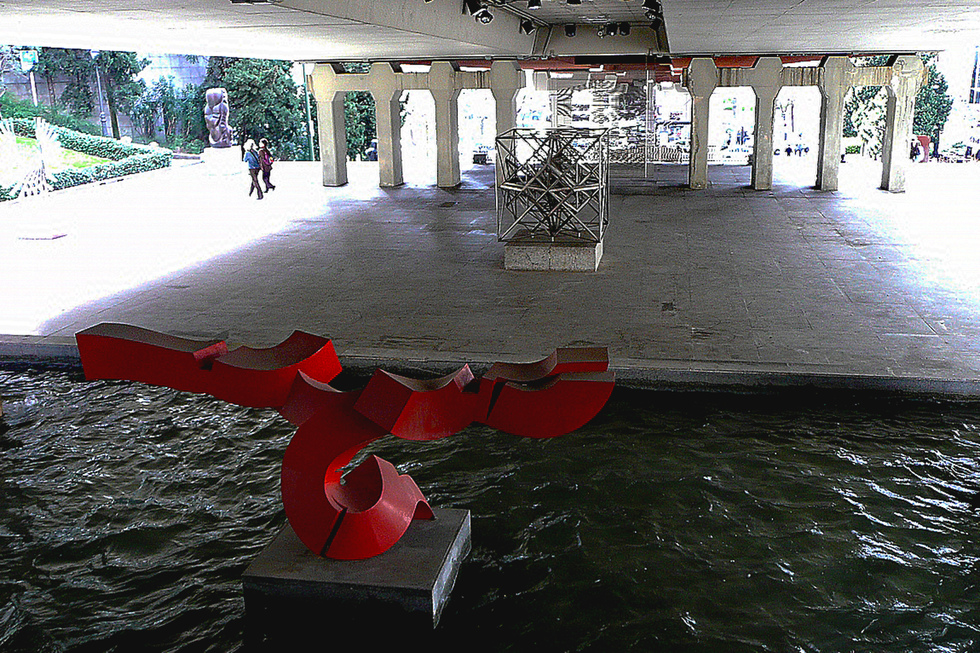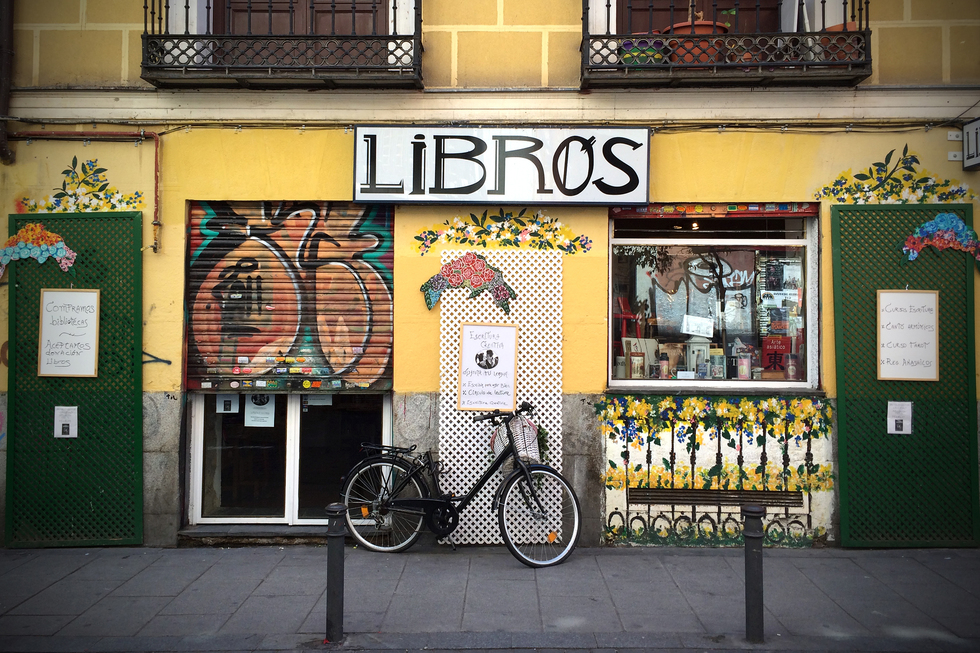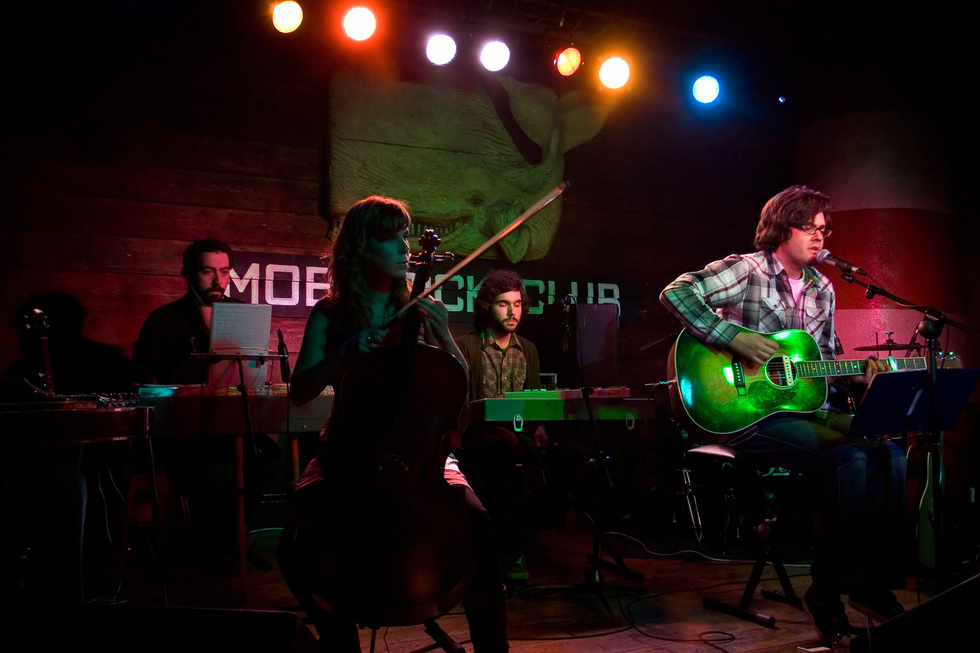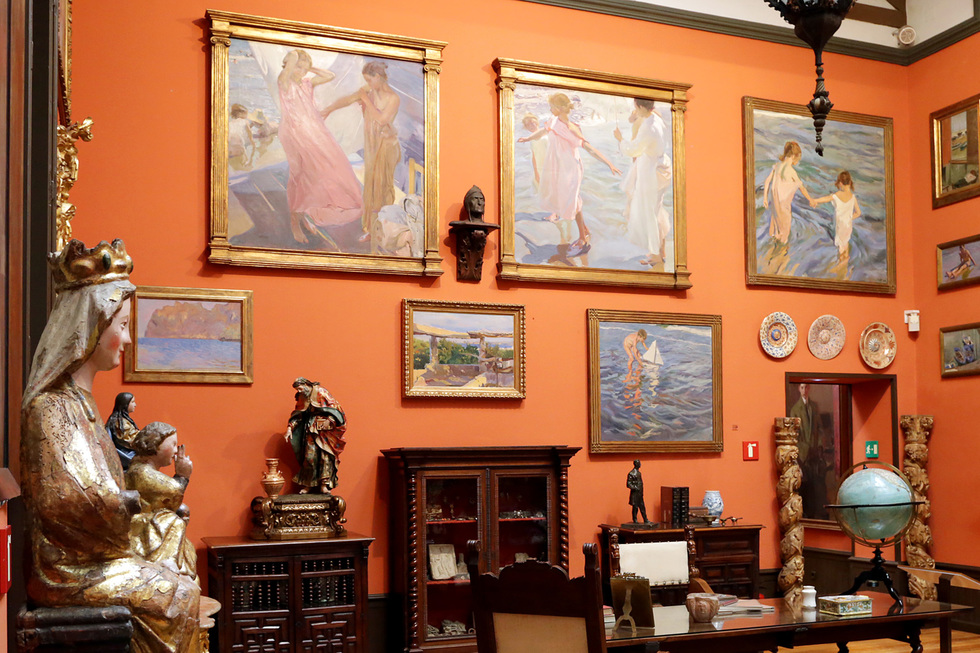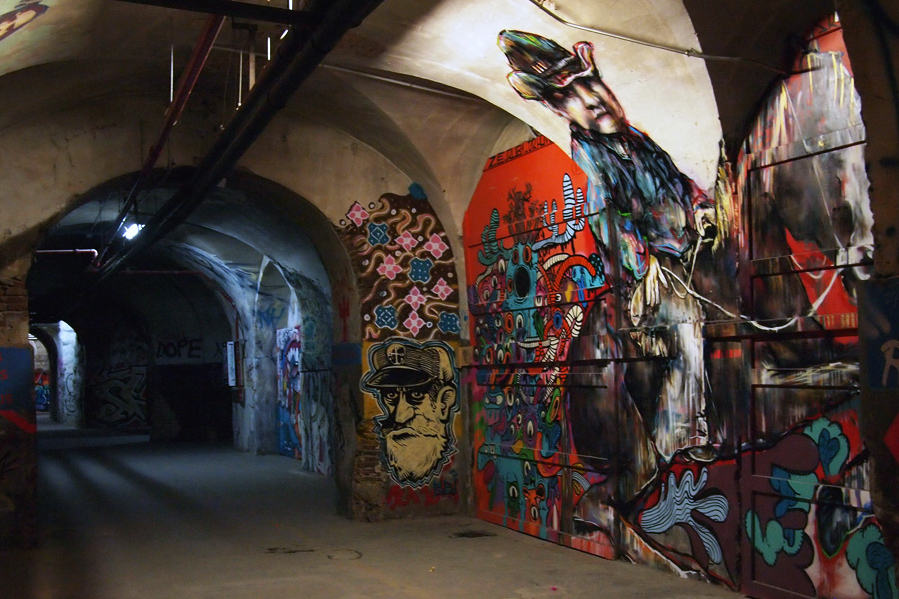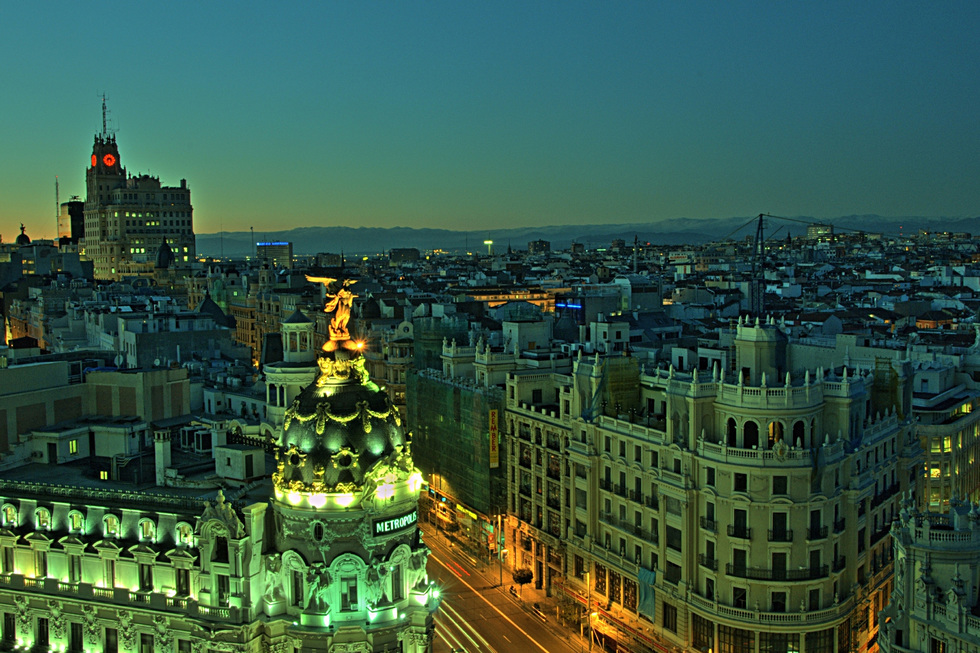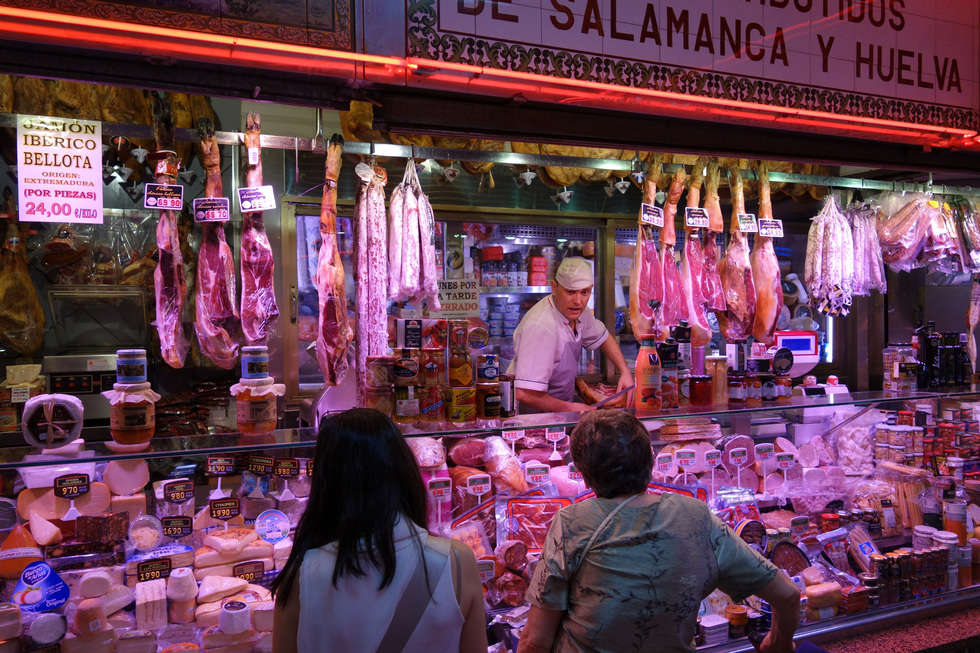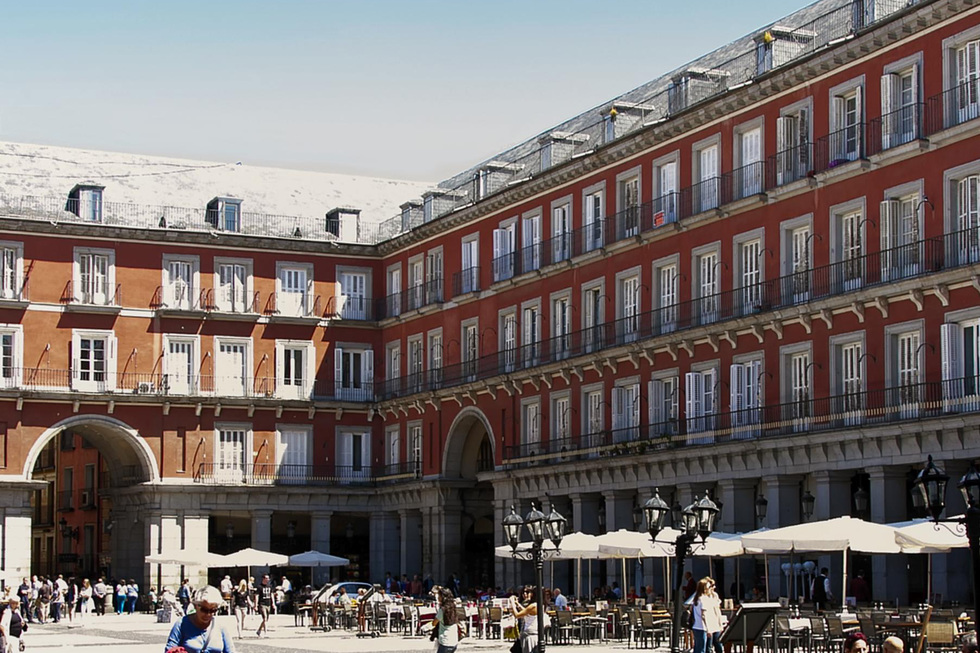Massimo Frasson/Flickr Photographer/Flickr
Madrid Like a Local: 10 Can't-Miss Experiences
By Samantha Zúñiga-LevyMadrid is a great city to get lost in. Some of the best discoveries I've made there were from taking wrong turns and deciding not to look at the map on my phone. I just keep walking until I get to a Metro station—there are so many, there's always one nearby when I'm finished exploring. But even wandering aimlessly requires a starting point. Begin your discoveries at a few of these rewarding finds, many of which I stumbled upon by accident. They'll show you what real life is like for the average Madrileño even as you see a different side of the city—one that’s bursting with energy and unexpected treasures.
Wordridden/Flickr Photographer/Flickr
Cafeterías: A Strong Tradition of Strong Coffee
According to legend, Pedro Páez, a Spanish Jesuit evangelizing in Ethiopia and the Middle East in the 1590s, became the first European to drink coffee. Thus began a Spanish obsession. Spaniards are known for staying out late at night and drinking several cups of coffee during the day to compensate. While pretty much any bar or restaurant in Madrid will serve you a traditional café solo (espresso) or café con leche (espresso with milk), java aficionados will want to stop at cafeterías devoted entirely to coffee. Toma Café has two low-key locations (Calle de la Palma 49 and Calle Santa Feliciana 5) that put a premium on finding the best beans possible. The two-wheeler-themed La Bicicleta (Plaza de San Ildefonso 9) is a favorite of locals toiling over laptops. And Santa Eulalia Boulangerie Patisserie (Calle Espejo 12) serves coffee and tasty treats atop the ruins of the 12th-century muralla Cristiana (Christian wall). Stones are visible through glass panels in the floor.
Sala Equis: Serious Cinema in Playful Surroundings
Barhopping in Madrid is about more than drinking. Increasingly, nightlife hotspots strive to create a sensory experience. Ojalá (Calle de San Andrés 1) has an indoor beach, complete with sand. Lolina Vintage (Calle del Espíritu Santo 9) features retro décor from the 1950s and ‘60s. And Sala Equis (Calle del Duque de Alba 4) is in a former X-rated movie theater. In the building’s ivy-covered bar (pictured), you can experience a range of cinema, from silent classics to contemporary art films (though no more X-rated stuff), while settled on a striped beach chair or one of two large swings hanging from the ceiling. Enjoy a caña (a small beer on tap) and order a tapa or two—the food menu is sparing but delicious, with vegan and vegetarian options.
Museo de Escultura al Aire Libre: High Art Under an Overpass
The Prado and the Reina Sofia are world-class museums, but if you don’t have admission money and hours to spare, the Museo de Escultura al Aire Libre de la Castellana is a faster, more laid-back, and free way to get to know important Spanish artists. Featuring 17 abstract sculptures by Eduardo Chillida, Joan Miró, and other members of the avant-garde, the open-air museum occupies space under and around an overpass connecting the streets of Juan Bravo and Eduardo Dato. Several pieces are designed to be climbed or otherwise interacted with by visitors. The museum also has a special link to recent Spanish history. In the 1970s, citizens held a fiesta here to celebrate the end of Francisco Franco’s dictatorship, and a large concrete hanging sculpture, La Sirena Varada, became a symbol of Spain’s young democracy, rising improbably from a difficult past.
Álvaro Ibáñez/Flickr Photographer/Flickr
Indie Bookshops: Big Ideas in Tiny Spaces
Throughout Madrid, you’ll happen upon tiny bookshops that look as if they could have sprung from one of the storybooks they sell. And you can be sure that every volume in their often eclectic collections has been curated with care. Libros para un Mundo Mejor (pictured; Calle del Espíritu Santo 13), which translates to "books for a better world," is an admirably ambitious name for such an unassuming spot. Wander through the low-ceilinged rooms and you’ll likely spot the store’s resident cat, who commandeers the laps of unsuspecting visitors. If your Spanish is a little rusty, try J & J Books and Coffee (Calle del Espíritu Santo 47), where the books are in English and the bagels are house-made.
Jose Luis Heredia/Flickr Photographer/Flickr
Moby Dick Club: Live Music Amid Nautical Decor
Though it’s a small venue, Moby Dick Club (Av. de Brasil 5) holds its own in the Madrid music scene, attracting local as well as international artists. Indie rock is a focus, but metal, pop, folk, soul, and jazz musicians are also invited to do their thing on the small wooden stage, amid oars, rigging, and the club’s emblematic whale wall art. The doors open at 9pm and shows usually start around 10:30pm. People often stay till 6am and catch the metro home when it reopens 15 minutes later. Now you know why Spaniards have to drink so much coffee.
Museo Sorolla: The Mediterranean in Madrid
Turn-of-the-twentieth-century Spanish artist Joaquín Sorolla was famous for idyllic paintings of his family at the Mediterranean Sea. His style, known as Luminism, emphasizes the interplay of light and color, paying special attention to white. The bite-sized Museo Sorolla (Paseo del General Martínez Campos 37), located inside the former studio-house of the artist himself, contains one of the best collections of his work. Inspect the paintings and the tools used to create them, then stroll through the lush gardens. Sorolla designed the landscaping, too.
Marta Nimeva Nimeviene/Flickr Photographer/Flickr
La Tabacalera: Underground Art in a Converted Tobacco Factory
In recent years, Madrid has faced the difficult task of renovating run-down areas without alienating or excluding residents. La Tabacalera (Calle de Embajadores 53) is one of the more successful attempts at this kind of reclamation. The former tobacco factory has been converted into a center for cultural diversity and public dialogue, where anyone can come to make or see art—no matter how strange. In addition to a free exhibition space showcasing edgy contemporary works, the complex has a space for special events and talks as well as a community garden and bar. (But don’t take kids here. One recent show of photographs depicted torture and body mutilation.) Be sure to walk the perimeter and see the mural-covered walls, which celebrate arte urbano, or street art.
Felipe Gabaldón/Flickr Photographer/Flickr
Círculo de Bellas Artes Rooftop: Vino and Views
What goes better with wine than a great view? The bar at the azotea (terrace) on top of the Círculo de Bellas Artes building (Calle de Alcalá 42) is the perfect place to gawk at the Madrid skyline and the sierras beyond. A towering statue of Minerva, the Roman goddess of knowledge and art, crowns the rooftop, looking out over the city and providing prime Instagram fodder. To join the stylish crowd at the bar for drinks and slightly overpriced tapas, purchase elevator tickets for a few euros in the lobby.
Binder.donedat/Flickr Photographer/Flickr
Mercado Antón Martín: Ultra-Fresh Food at a Traditional Market
Spaniards take pride in the quality of their food, often doing their grocery shopping at specialty stores and stalls rather than block-sized supermarkets. Mercado Antón Martín (Calle de Santa Isabel 5) is a traditional food market with both shopping and dining options. You’ll see a lot of locals here—something that can’t be said for the labyrinthine El Rastro flea market or the gourmet tourist trap that is Mercado de San Miguel. One of the advantages of Spanish food is that it is generally very fresh. The best way to enjoy jamón ibérico, for instance, is to have it shaved off one of the pork legs hanging from the ceilings of butcher stalls. You’ll also want to try some of Spain’s famous cheeses, such as manchego, as well as some delightfully salty Marcona almonds.
Jim Anzalone/Flickr Photographer/Flickr
Plazas: The Pulse of the City
Whether they’re drinking in bars, going out for coffee, or simply strolling in parks, Spaniards spend a lot of time out of the house. While the home is reserved as a space for family and close friends, the majority of socializing takes place elsewhere. One key ingredient in this tradition is the plaza. Madrid’s plazas range from the busy Metro hub at Puerta del Sol to the historic Plaza Mayor (pictured above) to the quiet Plaza de la Paja, home to a gemlike 16th-century chapel. Nearly every neighborhood contains several plazas, which serve as meeting points, pop-up markets, and lunch spots for office workers. One of the most picturesque squares near the center of town is Tirso de Molina, where colorful apartment buildings surround an array of flower sellers. For some top-notch people-watching, grab a café con leche and a table at a bistro lining a plaza in the late afternoon, when many Spaniards prefer to snack and socialize before the tapas bars open.





